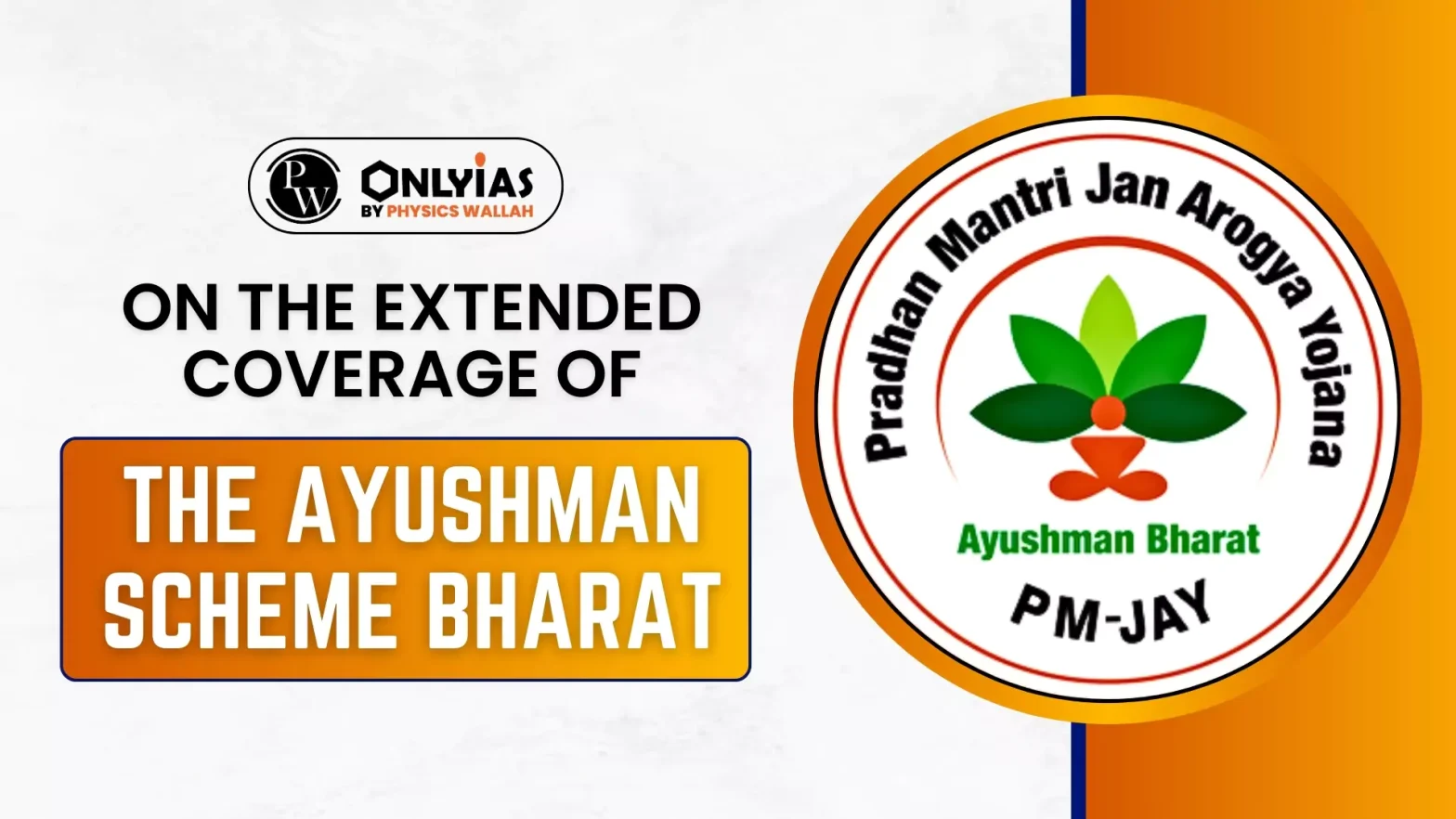Recently, the Ayushman Bharat Pradhan Mantri Jan Arogya Yojana (AB PM-JAY) has been extended to include senior citizens aged 70 and above, regardless of caste, income, or other factors. This expansion is a commendable step, offering free health coverage to a significant segment of the population.
The Ayushman Bharat Scheme comprises two key components
- Health and Wellness Centres (HWCs): These centres aim to provide comprehensive primary health care services, including preventive, promotive, and curative care, at the grassroots level.
- Pradhan Mantri Jan Arogya Yojana (PM-JAY): This scheme offers health insurance coverage of up to ₹5 lakh per beneficiary family annually for secondary and tertiary care hospitalisation.
- Beneficiaries: Beneficiaries include the ones identified based on the 2011 Socio-Economic Caste Census (SECC) and also the prior beneficiaries of the Rashtriya Swasthya Bima Yojana (RSBY).
While extending the Ayushman Bharat scheme is a commendable step towards increasing insurance coverage in India, it does not fully address the high out-of-pocket healthcare expenses that many Indians face due to insufficient insurance. In contrast to countries like the US and UK, where insurance coverage is more comprehensive and financial support is greater, the financial burden on individuals in India remains significant. Moreover, offering a ₹5 lakh coverage alone is unlikely to achieve all health objectives, as several concerns and limitations still need to be addressed.
Enroll now for UPSC Online Course
Concerns
- Limited to Secondary and Tertiary Care
-
- No Outpatient Care Coverage: Outpatient care includes medical services provided to patients who do not require regular hospitalisation, such as routine check-ups, minor procedures, and follow-up visits. The absence of coverage for outpatient care, diagnostics, and medications is concerning. Chronic diseases have become more prevalent among the elderly, leading to higher expenditures on outpatient care. This accounts for 40%-80% of their health-related expenses, which the scheme does not address.
- Chronic Diseases: Chronic diseases are long-lasting conditions that progress gradually over time and often require ongoing management and care. Examples include diabetes, hypertension, and arthritis. These conditions are on the rise and typically do not require regular hospitalisation. However, they are not covered under this extended scheme.
Levels of Health Care:
- Primary Care: These are basic, preventive, and routine health services typically provided by general practitioners. Primary care focuses on overall health maintenance and early intervention. Example: Primary Health Centres (PHCs), which offer general health services and preventive care.
- Outpatient care refers to medical services provided to patients who do not require an overnight stay in a hospital. It typically includes routine check-ups, preventive services, and management of chronic conditions, which align with the goals of primary care
- Secondary Care: This level involves specialised medical services and treatment provided by experts, usually following a referral from a primary care provider. Secondary care includes more advanced diagnostic and therapeutic services. Example: District Hospitals, which provide specialised care for more complex health issues.
- Tertiary Care: This level offers highly specialised and advanced medical treatments for complex conditions, usually provided by specialised institutions or experts. Tertiary care involves sophisticated procedures and treatments not available at lower levels of care. Example: Specialised medical centres or institutions that offer advanced surgical procedures and specialised treatments.
|
- Regional Disparities: Since its launch in 2018, the penetration of PM-JAY into smaller cities and towns has been low in most States. Unlike in most of the southern States, primary and secondary health care in the public sector has been largely neglected and is inadequate and ill equipped to meet the demand in other parts.
- Focus on Cure than Prevention: The Indian healthcare system is concentrated more on curative care rather than preventive or primary care. Currently, the emphasis tends to be on addressing diseases and conditions after they have developed, often through advanced interventions and insurance coverage. The absence of robust primary and secondary healthcare in many regions leads to an over-reliance on tertiary care facilities, such as AIIMS. Primary healthcare needs to be strengthened so that cases can be identified and treated early, potentially preventing the need for tertiary care.
Check Out UPSC CSE Books From PW Store
Lessons from Global Examples
- Thailand’s Focus on Primary Health Care: Thailand invested heavily in strengthening its primary healthcare system by diverting funds from urban hospitals to build rural health centres. This ensured the implementation of preventive healthcare. Early detection and treatment of diseases help in managing conditions before they progress to a stage requiring tertiary care. This focus has led to universal health coverage and significantly reduced reliance on tertiary care.
- U.S. Model: Insurance-Based System: In the U.S., the healthcare system is primarily insurance-based, where if a disease arises, patients can seek care from private hospitals, and the government typically covers the costs through insurance. However, this model presents challenges:
- Dependence on Private Hospitals: Patients may be referred to private hospitals for secondary or tertiary care. This can lead to increased costs and potential delays in treatments.
- High Costs: As the government reimburses private hospitals for the care provided under insurance schemes, this can result in higher overall costs for the government and sometimes leads to inefficiencies.
- Potential Risks for India: India faces risks in following a similar model. The reliance on private hospitals can lead to increased costs and delays in treatment. Additionally, private hospitals may conduct more tests and charge higher fees, which can place a financial burden on both patients and the government.
Conclusion
India could benefit from adopting Thailand’s model rather than following the U.S. system. By focusing on improving primary and secondary healthcare, as Thailand has done, India can enhance early detection and treatment of diseases, preventing many cases from advancing to tertiary care. This approach ensures timely and effective treatment, which can reduce overall healthcare expenditures. Investing in primary and secondary care creates a win-win situation: patients receive prompt and efficient care, while the government benefits from lower costs and improved health outcomes.
![]() 13 Sep 2024
13 Sep 2024

